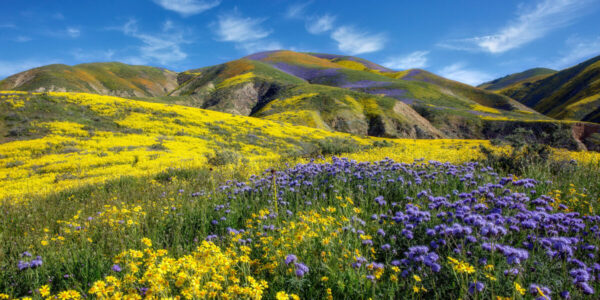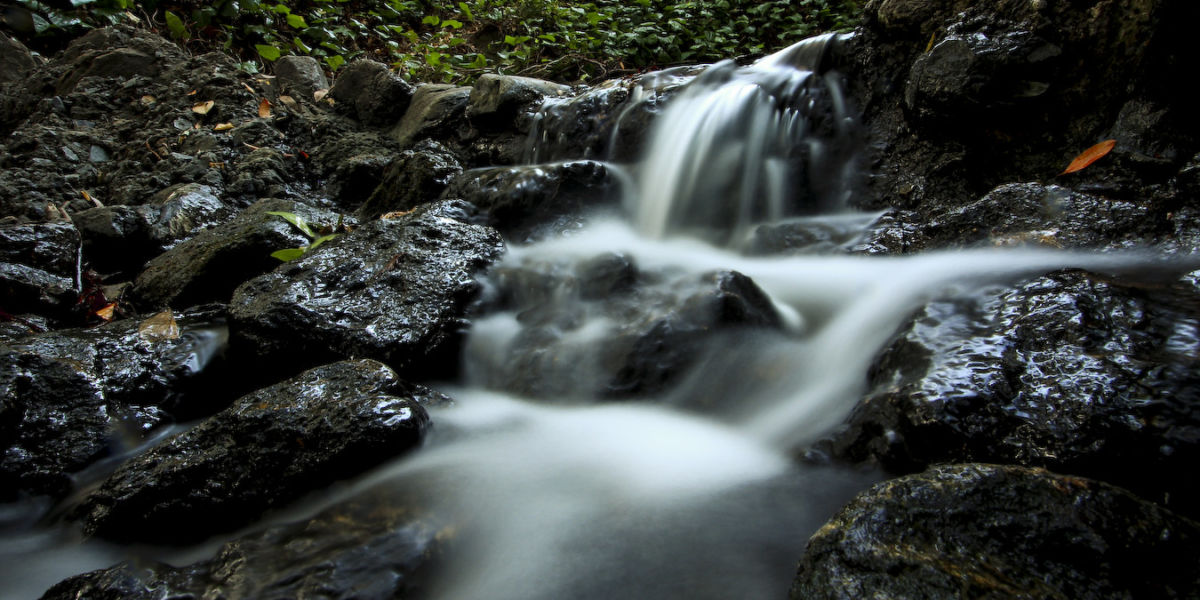
Do You Know Where Your Bottled Water Comes From? Hint: Partially From Drought-Ridden California
The bottled water industry is getting rich off California water. Here’s how they’re doing it (and how much they’re making)

Bottled water companies are feeling the heat in California lately.
From improperly disposing of toxic wastewater to facing accusations of plundering already drought-ridden California’s mountain springs and municipal water stores, the companies that own Arrowhead, Crystal Geyser, Pure Life, Aquafina, and Dasani are under pressure from California residents and environmentalists (and that’s not even including the growing anti-plastic bottle movement and the study that shows bottled water contains microplastics).
CG Roxane, the parent company of Crystal Geyser based in Olancha, California, has pleaded guilty to illegally storing and transporting hazardous waste (in this case, arsenic-laden wastewater). The environmental repercussions of their “arsenic pond,” as well as of dumping 23,000 gallons of their toxic, potentially carcinogenic water into California sewers, is still unknown. The cost to the company is a $5 million fine, which is not considered a threat to their business.
Many companies bottle California’s water, including Swiss company Nestlé and huge American brands like Aquafina (owned by PepsiCo) and Dasani (owned by Coca-Cola). The companies have been criticized for taking from the water supply at high environmental cost to drought-ridden California, while paying shockingly low rates for the water. Many of the brands are no better than what comes out of your sink; Aquafina takes Fresno tap water and purifies it. Starbucks, under fire for bottling in extremely drought-plagued Merced County, moved the source of its water, Ethos, to Pennsylvania.
But how much do they actually pay for California water? “[The amount] varies greatly, and often the corporation pays pennies on the dollar for this vital resource,” Taylor Bilings of Corporate Accountability, a social and environmental justice non-profit monitoring Nestle’s water sourcing, said. “The way forward is to invest in our publicly-controlled water systems—not bottled water.”
The money gained, however, is clear. Nestlé Waters has posted sales of approximately $8.1 billion for 2018. In 2019, Nestlé Waters posted half-year sales of approximately $4.1 billion and nine-month sales of approximately $6.2 billion. Though the full 2019 annual report has not been released, Nestlé Waters’ earnings for 2019 are set to outpace 2018 earnings.
As a global conversation over current and future water supply wars ensues and The Clean Water Act is rolled back, humanity’s most vital commodity is being packaged from our springs and city supplies and sold back to the nation in bottled form with minimal financial or ecological benefit to local communities. Here are the big bottlers in the West, and what we know about what they’re taking.
Arrowhead, Owned by Nestlé
Sourced partially from:
Groundwater from the San Bernardino Forest, where Arrowhead has a long history of marketing mountain spring water as almost mythically pure. Nestlé said it took an average of 62.6 million gallons of water from the San Bernardino Forest each year from 1947 to 2015. However, Nestlé paid only $524 a year under a 1978 permit that expired but which the company continued to use. The U.S. Forest Service issued a new permit in 2018 for $2,000 despite local protests, and there is no additional retail fee or surcharge to Nestle for selling the water.
The fallout:
The 2018 permit was issued despite concerns from locals that the U.S. Forest Service skipped an environmental review and that collecting from the impaired watershed would dry up nearby springs and streams and negatively impact nearby wildlife.
Crystal Geyser, Owned by CG Roxane
Sourced partially from:
Groundwater and well water from Weed, a small city at the base of Mount Shasta, and Olancha, a largely unpopulated area three hours north of Los Angeles, in addition to several other locations across the country. Crystal Geyser claims that its average water usage over the course of a year is 115,000 gallons per day, or almost 42 million gallons per year, with one bottling line at full production.
The fallout:
Local residents near Mount Shasta are concerned that companies like Crystal Geyser, Nestlé, and McCloud Artesian Spring Water are straining aquifer reserves. They fear losing control of priority rights to their water in favor of the bottling companies.
Pure Life, Owned by Nestlé
Sourced partially from:
Municipal city water in Sacramento, Livermore, Pasadena, Ontario, Los Angeles, and Cabazon. Nestlé purchased 50 million gallons of water a year from Sacramento in 2014. It took 35 million gallons a year from Phoenix water until it closed its controversial plant there. Bottled water companies pay $1 per 100 cubic feet to Sacramento for city water, which is equal to what local residents and businesses pay, but unlike local businesses, the benefit does not return to the community as most bottles are exported outside the local community. Pure Life is garnering Nestlé strong profits in international emerging markets like Egypt.
The fallout:
Nestlé’s plants in arid western cities have stirred controversy because Sacramento and Phoenix are arid climates with conservative water supplies.
As water wars ramp up in the West between thirsty growing populations, vast agricultural needs, and endangered wildlife, bottled water production begs the question: can we ecologically or financially afford the lax laws that allow companies to bottle our municipal supplies, well reserves, and mountain springs, in order to export our water across the nation and to the world?
